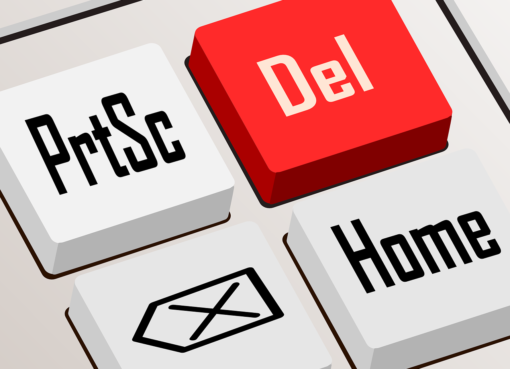We have previously touched on the top three email marketing services along with the importance of building trust into your email marketing list, however we didn’t really dig into the tried and true effective strategies.
The fact is that an inbox is a cutthroat environment. We as consumers, are blasted with marketing messages of all kinds, some are great messages and offers alike while others are only trash worthy. With over 144 billion emails sent each and every day, email marketing remains one of the elite channels for business communication.
While email marketing may not seem as “sexy” as more modern tools like social media platforms, it’s still working.
In fact, email customers are 12% more valuable than average, while Facebook customers are only 1% more valuable than average, and Twitter customers are actually 23% less valuable than average.
So how to separate the good from the ugly?
Finding that sweet spot, the space where your messages stand out from the rest of the noise is critical to your bottom line. Here are five essential inbox tested email marketing strategies to test for yourself.
1. Personalization
“Hello {INSERT NAME HERE}” could be a thing of the past. (I know this will make my significant other sad). The practice of personalizing an email greeting is no longer as effective as it used to be. Research from Temple’s Fox School of Business suggests that it could actually be harmful.
Given the high level of cyber security concerns about phishing, identity theft, and credit card fraud, many consumers would be wary of emails, particularly those with personal greetings.
As mentioned in our previous post, an important element of email marketing is the relationship between the sender and receiver. Ask these questions:
-
Have you established a trusting relationship with the recipient?
-
Does the recipient know who you are?
When your communication jumps into the familiarity zone too quickly, it could come off as pushy or even distasteful. And worse yet, faking the familiarity will also turn many recipients off. However, not all forms of personalization are off limits. In fact, certain types of personalization can pay off in a big way. Such as sending an email that acknowledges such facts as purchase history, demographic location, etc.
The lesson here is that if you are going to use personalization as an email strategy go the extra mile and do it in a meaningful way. Slapping in an subscriber’s name into your greeting is a no brainer, which might backfire and cause your list harm in the long run. It shows far greater care and initiative to send a personalized email that is relevant to the recipient’s needs and history.
2. Subject line magic
Subject lines will either have the person dying to click open or leave them bored and looking towards the next email. Besides if their inbox is anything like my own (I generally receive over a 200 emails a day from various sources), their time is limited to sort through what is read worthy and what simply goes into the digital circular file. 69% of email recipients report email as Spam based solely on the subject line. (Source: Convince&Convert)
Although copywriting is indeed a magical craft (so says my husband), when it comes right down to it deciding how to craft that perfect subject line there appears to scientifically only be one area to avoid. The subject line of 60 to 70 characters. This in the marketing world is often referred to as the “dead zone” of subject length. According to research done by Adestra, which tracked over 900 million emails, there isn’t an increase in either open rate or clickthroughs at the 60-70 character length subject line.
On the flip side, subject lines 70 characters and above tested the most worthy of engaging readers to click through. And subject lines 49 characters and under tested well with a higher open rate. Adestra also found that subject lines with fewer than 10 characters had an open rate of 58%.
3. Prime time to send your email
Mailchimp conducted a recent study (updated 06/13/2014) pinpointing the best day and time to send out campaign emails. They scanned over a billion emails to identify trends. These are their findings:
-
More people open during the day than at night. Subscribers are likely to open email afternoon – and the most active hours are from 2-5 PM.
-
More emails are sent during the week than on the weekends, with Tuesday and Thursdays being the highest volume days.
-
More links lead to more clicks. Placing a particular link inside the body of your email more than once increases the number of clicks to that link.
3. Give something away
Everyone loves free stuff! When someone signs up to your email list, they are expecting something in return. Bluewire Media ran a study on their 6,300 subscribers to see what types of content led to the highest click through rates. In the number one spot was useful templates, which pulled in a 26% to 66% click through rate.
The study also showed that templates and tools far outweigh ebooks, interviews, brain teasers, and photo albums.
4. Mobile design
Since mobile devices are responsible for 47 percent of all email opens, you would be damned silly not to optimize your email content for mobile.
Let’s put the science and the numbers into perspective. Litmus, an email marketing firm collected data from 397 million email opens worldwide and found that a whopping 47 percent of emails were opened on a mobile device of some kind.
So if your email list accounts for $100,000 in sales each month, could you afford to throw $44,000 out the window just because your email looked funky on a mobile device?
Here are some quick mobile design tips:
-
Convert your email to a one column template for an easy mobile fix.
-
Bump up the font size for improved readability on smart phones.
-
Follow the iOS guideline of buttons at least 44 pixels wide by 44 pixels tall.
-
Make the call-to-action obvious and easy to tap. Above the fold is always preferable.
-
Consider ergonomics. Many users tap and scroll with their thumb, so keep important tappable elements in the middle of the screen.
5. Bump up the activity of the inactive
Size doesn’t always matter. Yes, I actually put that out there in print for all to see.
Studies shows that the average inactivity for a list is 63 percent, meaning that even if you have a huge list only about two-thirds of them will actually follow-up with your email blasts. Studies also show that the first 90 days (just like in a new friendship relationship) is critical for turning a new subscriber into a loyal follower.
Use re-engagement campaigns to get that 63 percent back into the swing of things. Reach out to that segmented part of your list (and yes you SHOULD segment them) and attempt to reel them back into the fold.
Conclusion
As in all things labeled marketing, it’s about trial and error or testing. Test, test, and re-test. Of course all that is said above are done on different lists, lists that might very well be very different than your own. So by all means, test these hypotheses for yourself.
We would love to hear about your best email strategies and tips. Tell us in the comments below!


